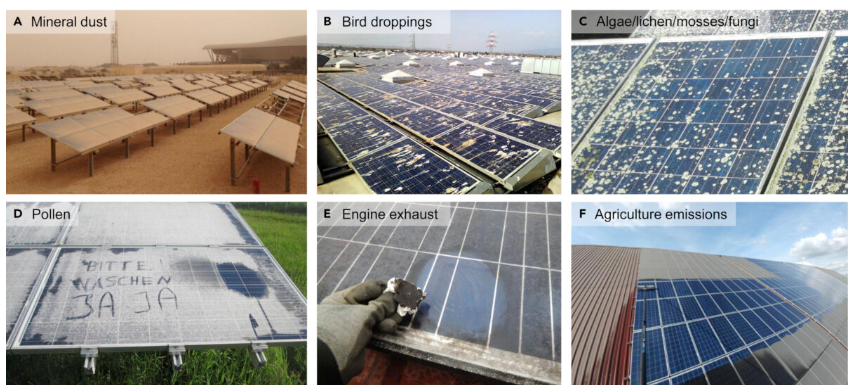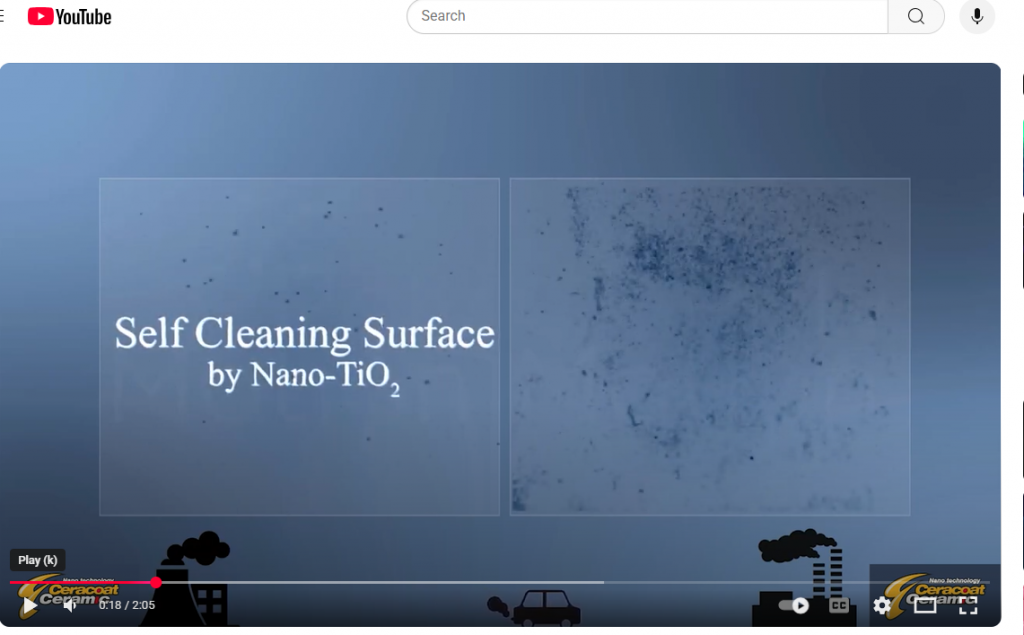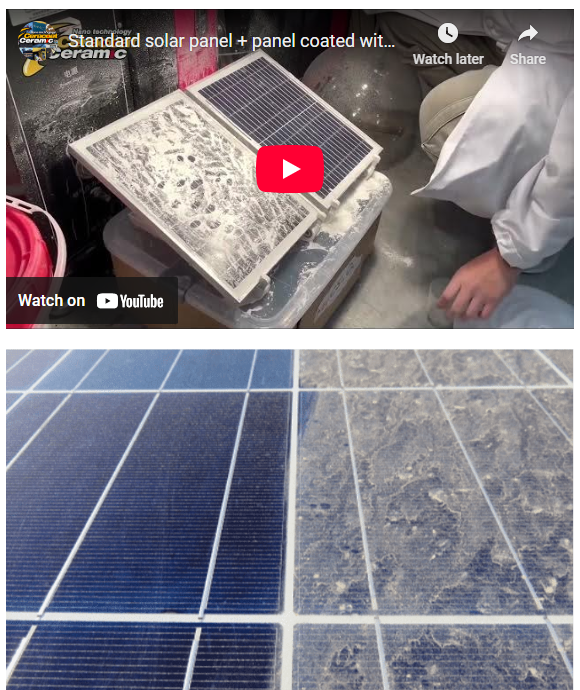
WE GUARANTEE A 25%+ INCREASE IN PRODUCTION FROM YOUR SOLAR PANELS WITH OUR CERAMIC TiO2 COATING.
—-
ON 1 MW THAT’S $40,000 OF ADDITIONAL REVENUE ANNUALLY AND YOUR CLEANING FREQUENCY IS 4X LESS.
Robert Fletcher, ChE/CEO

Https://www.linkedin.com/in/robertmfletcher
GUARANTEED AND MEASURABLE RESULTS.
PROVEN AROUND THE WORLD.
DEVELOPED IN SWITZERLAND.
EXCLUSIVELY IMPORTED BY OUR GROUP.


THE COATING IS BASED ON THE CHEMISTRY AND PHOTO REACTIVITY OF OF TiO2 (Titanium Dioxide).
THIS IS NOT JUST A WATER REPELLANT SOLUTION.
THE TiO2 DESTROYS POLLEN AND DUST AT THE MOLECULAR LEVEL.
CONTACT ME FOR A NO CHARGE
PROOF OF CONCEPT
SHOWING 25% INCREASE IN PRODUCTION AND A 3-4 MONTH RETURN OF INVESTMENT
Rob@RobertMerrillFletcher.com
Cell/WhatsApp: +1.213.500.7236

The coating and application cost is usually recouped in 3-4 months. The ROI is significant and ongoing. See the analysis below.
Let me know if we can setup a Proof of Concept A/B test on any properties that have the ability to measure output. We need about 15-30 panels for the test. Application is as simple as spraying it on.
COST BENEFIT ANALYSIS FOR A 1 MW SOLAR SYSTEM COATED WITH CERACOAT.
Let’s estimate about $200,000 in annual production revenue.
Thus, if we increased production by even 20% that would be $40k annually.
—
1 MW.. using 500w panels, that’s 2000 panels.
The cost is about $8-$10 per panel – all in.
That gives us a cost of $16,000-$20,000 against a payback of $40,000.
—
Therefore we see a less than 0.5 year payback that goes on, and on, and on. (The coating lasts six years).
(And the analysis above does not include the fact that the cleaning schedule can be reduced by a factor of 4x).

CONTACT ME FOR A NO CHARGE PROOF OF CONCEPT SHOWING 25+% INCREASE IN PRODUCTION AND 3-4 MONTH RETURN OF INVESTMENT
Rob@RobertMerrillFletcher.com
Cell/WhatsApp: +1.213.500.7236

APPLICATION AND SCIENCE OF CERACOAT
SCIENCE

TiO₂ + hν → e⁻ + h⁺ is a simplified representation of a photocatalytic reaction involving titanium dioxide (TiO₂).
What the symbols mean:
- TiO₂: Titanium dioxide, a semiconductor material commonly used in photocatalysis.
- hν: A photon of light, where h is Planck’s constant and ν (nu) is the frequency of the light. This represents the energy from light.
- e⁻: An excited electron.
- h⁺: A “hole”, which is the absence of an electron in the valence band — it behaves like a positively charged particle.
What the equation describes:
When TiO₂ is exposed to light (usually UV light), it absorbs the energy (hν) if the photon energy is greater than its band gap (about 3.2 eV for anatase TiO₂). This energy excites an electron from the valence band to the conduction band, leaving behind a hole in the valence band.
So the reaction:
TiO₂ + hν → e⁻ + h⁺
means:
- Light hits the TiO₂.
- An electron is excited (e⁻).
- A hole is created (h⁺).
Why this is important:
This electron-hole pair can participate in redox reactions:
- The electron (e⁻) can reduce substances (e.g., convert oxygen to superoxide).
- The hole (h⁺) can oxidize substances (e.g., convert water to hydroxyl radicals).
These reactions are useful in:
- Water purification
- Air cleaning
- Self-cleaning surfaces
- Solar energy conversion
Key Steps in the Cycle:
- Light Absorption
- TiO₂ absorbs UV light (hν), generating an electron (e⁻) and a hole (h⁺).
- Charge Separation
- The electron moves to the conduction band, while the hole remains in the valence band.
- Surface Reactions
- e⁻ + O₂ (adsorbed) → O₂⁻ (superoxide radical)
- h⁺ + H₂O → OH• + H⁺ (hydroxyl radical)
- Pollutant Degradation
- Reactive species like OH• and O₂⁻ attack and break down organic pollutants into harmless products like CO₂ and H₂O.
Here’s a detailed explanation of each step in the photocatalytic cycle using TiO₂ (titanium dioxide) as the catalyst:
Step 1: Light Absorption
Equation:
TiO₂ + hν → e⁻ + h⁺
- What happens:
Ultraviolet (UV) light hits the TiO₂ surface. If the photon energy (hν) is greater than the band gap (~3.2 eV for anatase TiO₂), an electron is excited from the valence band to the conduction band. - Result:
This creates a free electron (e⁻) and a hole (h⁺) — a positively charged vacancy where the electron used to be.
Step 2: Charge Separation and Migration
- What happens:
The electron and hole migrate to the surface of the TiO₂ particle. If they recombine, the energy is lost as heat or light. But if they reach the surface, they can participate in chemical reactions. - Goal:
Prevent recombination to allow redox reactions to occur.
Step 3: Reduction Reaction (Electron Pathway)
Equation:
O₂ (adsorbed) + e⁻ → O₂⁻
- What happens:
The electron reduces adsorbed oxygen molecules on the TiO₂ surface, forming superoxide anions (O₂⁻). - Why it matters:
O₂⁻ is a reactive oxygen species (ROS) that can attack and degrade organic pollutants.
Step 4: Oxidation Reaction (Hole Pathway)
Equation:
H₂O + h⁺ → OH• + H⁺
- What happens:
The hole oxidizes water or hydroxide ions (OH⁻), producing hydroxyl radicals (OH•). - Why it matters:
OH• is extremely reactive and can break down complex organic molecules into harmless products like CO₂ and H₂O.
Step 5: Pollutant Degradation
Example Reaction:
Organic pollutant + OH• → CO₂ + H₂O + other harmless products
- What happens:
The reactive species (OH•, O₂⁻) attack and degrade pollutants such as dyes, bacteria, VOCs (volatile organic compounds), and other contaminants. - End result:
Clean air, water, or surfaces depending on the application.
Summary of Roles:
| Component | Role |
|---|---|
| TiO₂ | Photocatalyst, absorbs light |
| hν (UV light) | Energy source |
| e⁻ | Reduces oxygen to form ROS |
| h⁺ | Oxidizes water to form OH• |
| O₂⁻, OH• | Reactive species that degrade pollutants |
CONTACT ME FOR A NO CHARGE PROOF OF CONCEPT SHOWING 25+% INCREASE IN PRODUCTION AND 3-4 MONTH RETURN OF INVESTMENT
Rob@RobertMerrillFletcher.com
Cell/WhatsApp: +1.213.500.7236



